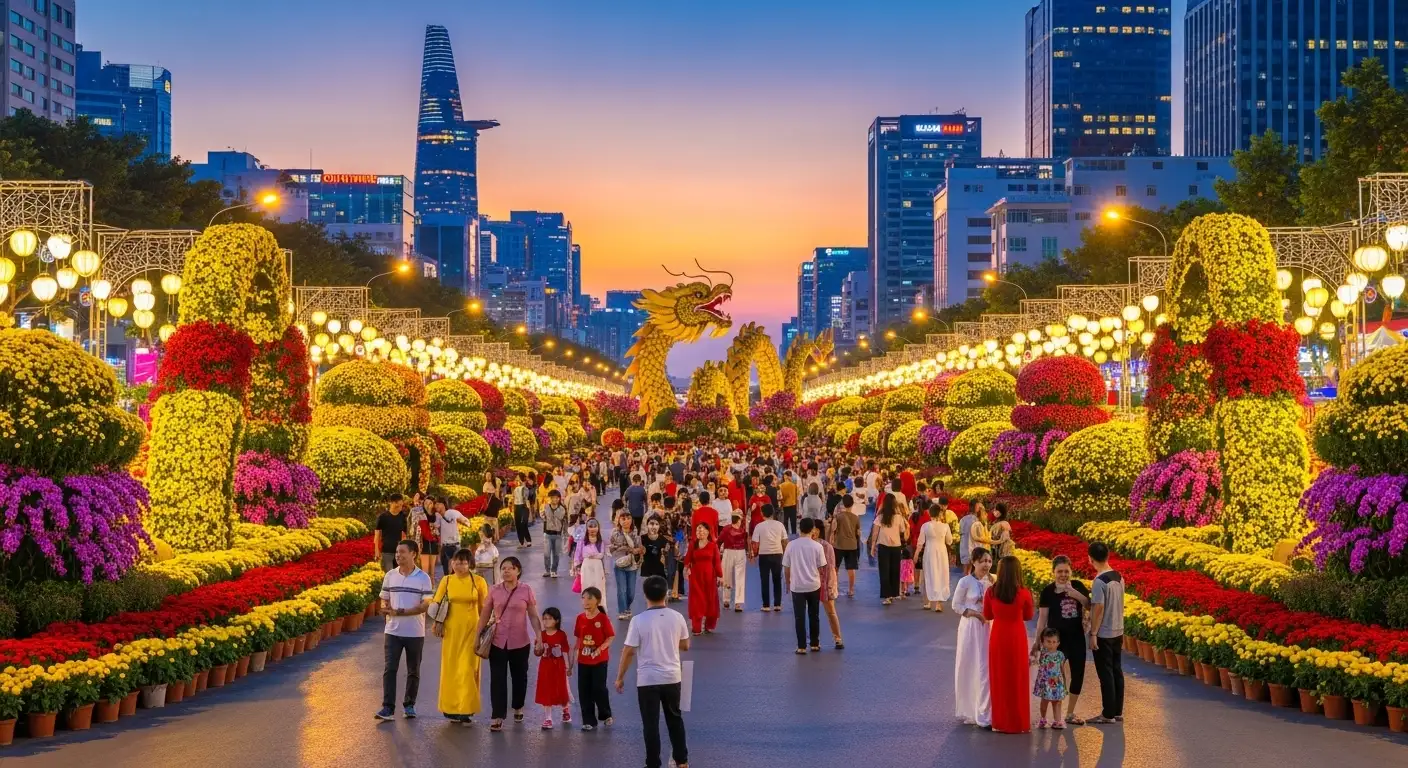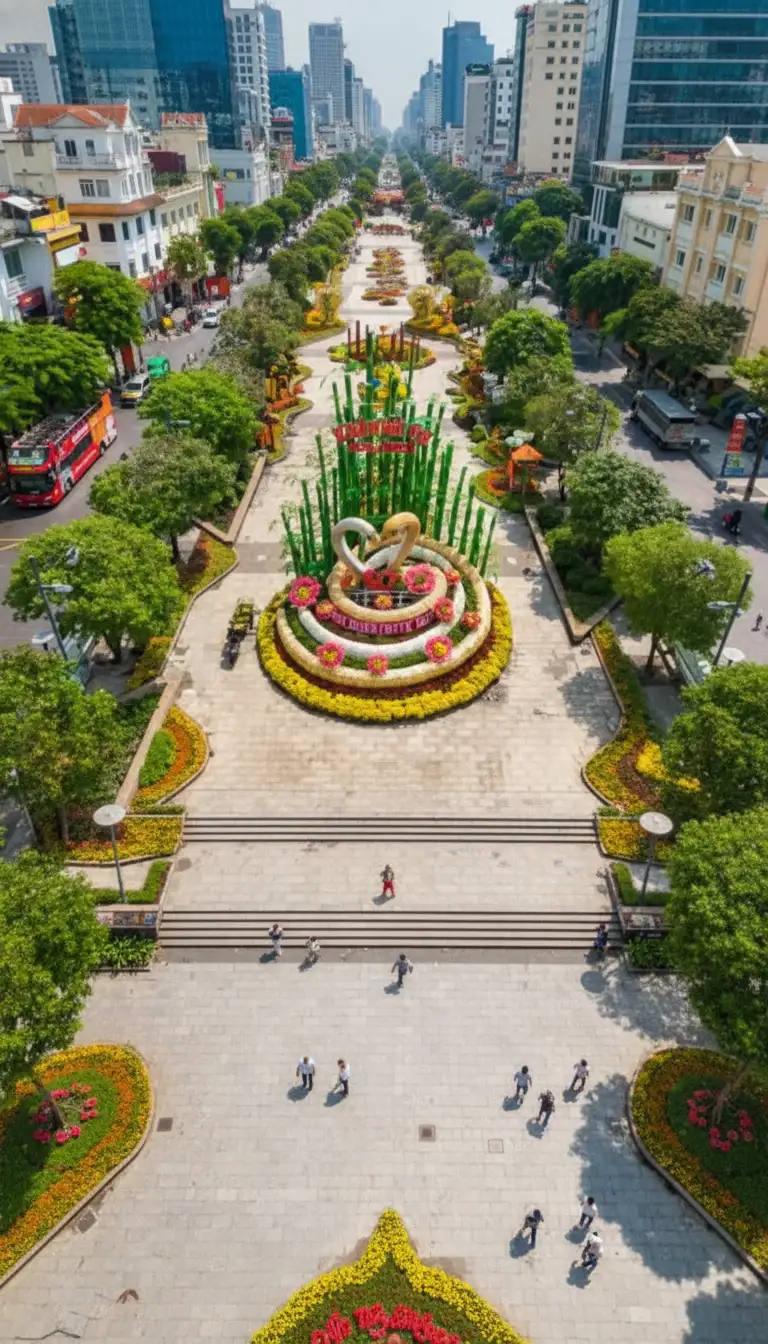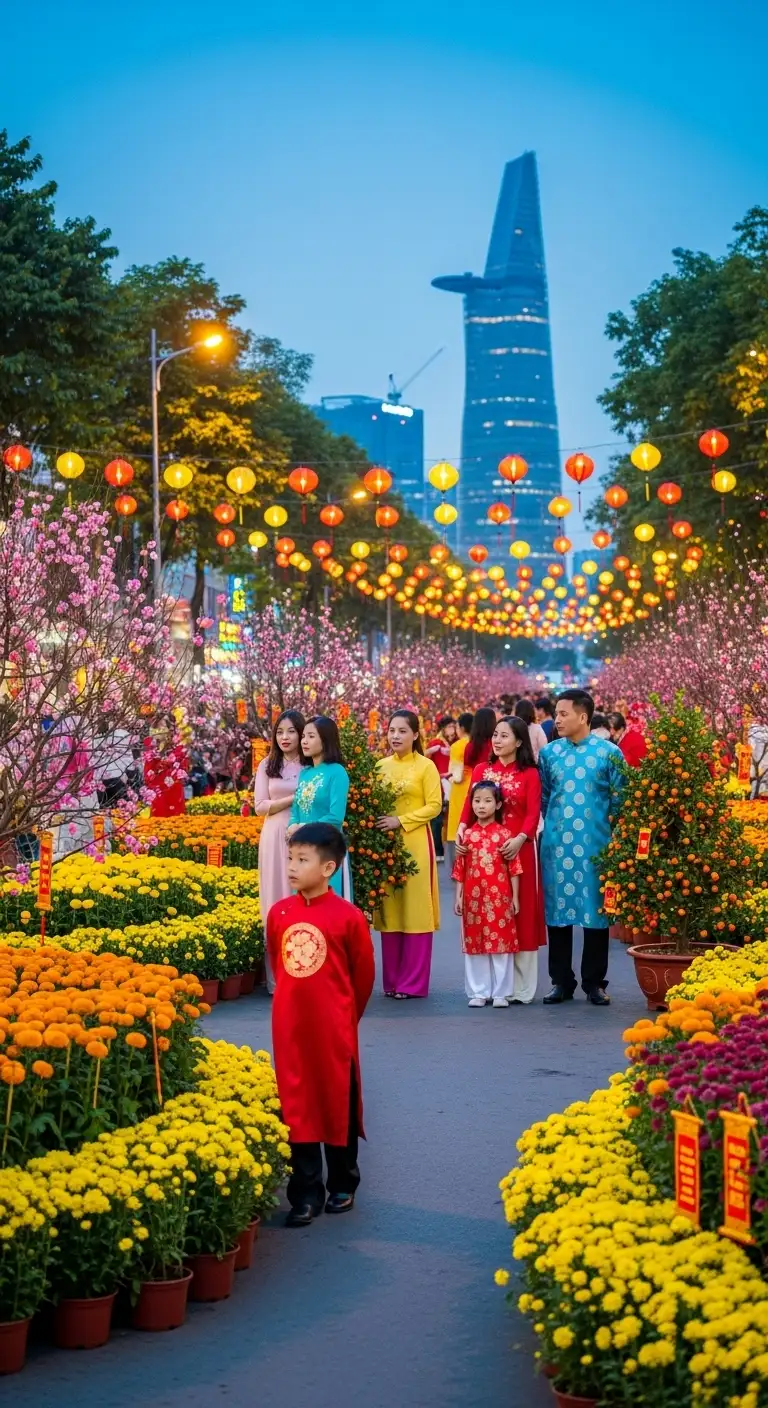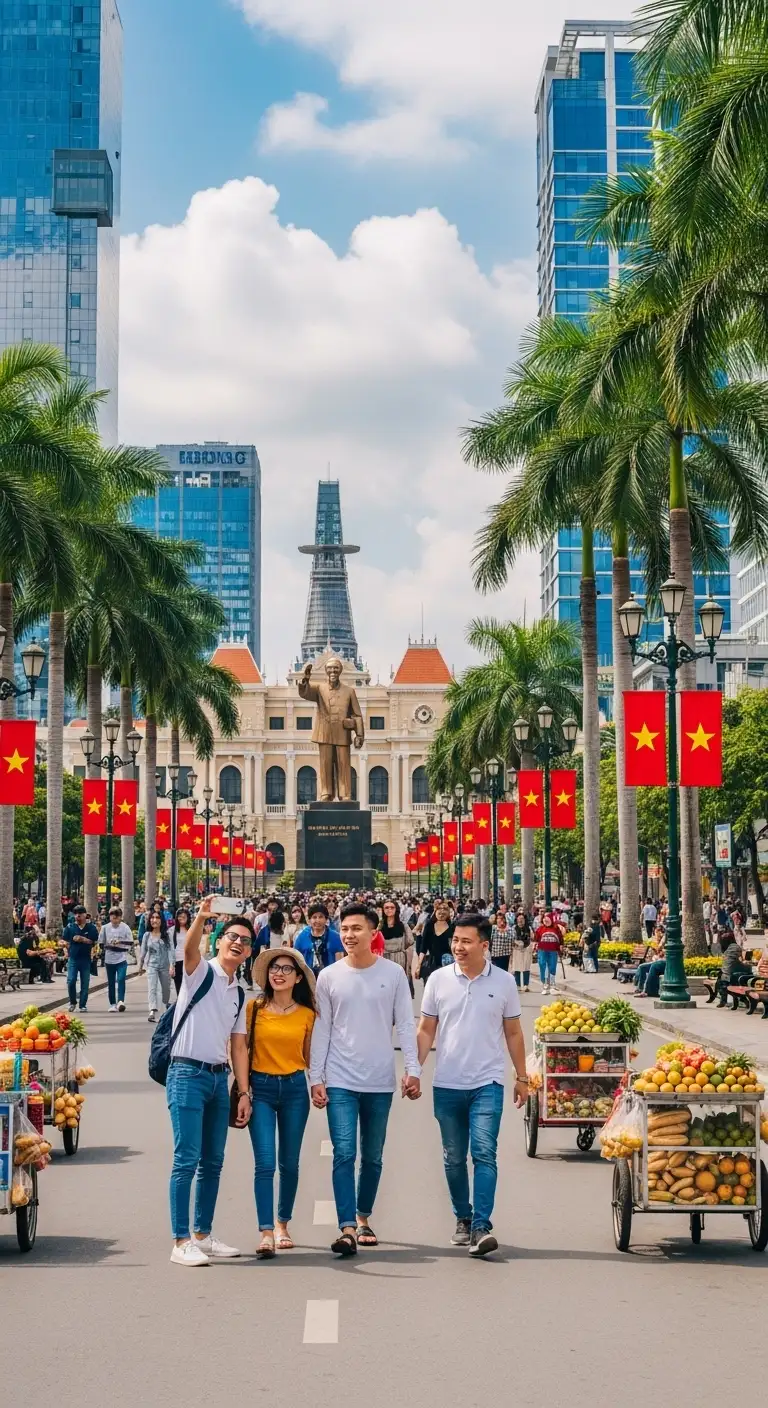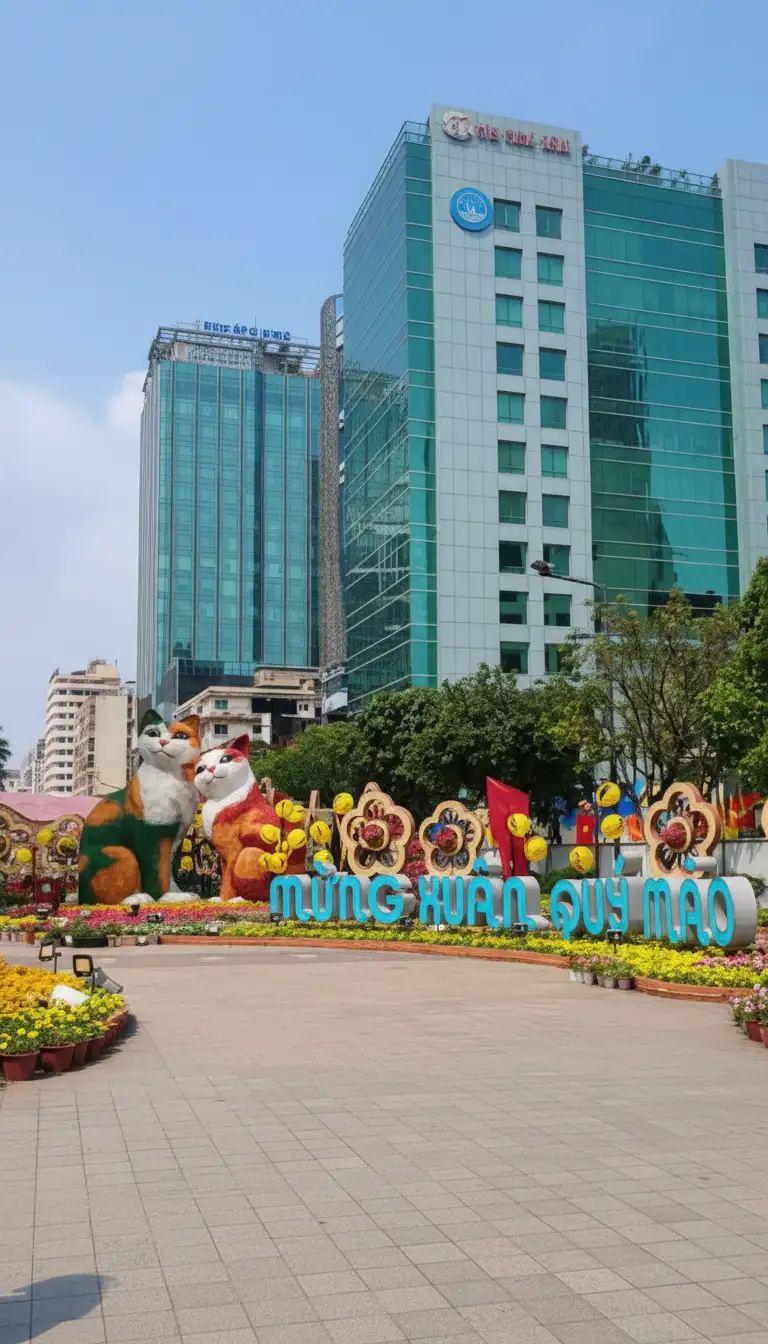Quick Facts
| Data Field (Title) | Content | Icon/Note |
|---|---|---|
| Vietnamese Name | Đường hoa Nguyễn Huệ | Translated as the Nguyễn Huệ Flower Street. |
| Occasion | Lunar New Year (Tết Holiday) | The most important annual celebration in Vietnam. |
| Location | Nguyễn Huệ Walking Street, District 1, Ho Chi Minh City (HCMC). | Central pedestrian boulevard, connecting the City Hall and the Saigon River. |
| Timing | Approximately 7 days, usually opening two or three days before Tết Eve and closing on the 4th or 5th day of the Lunar New Year. | The exact dates align with the lunar calendar each year. |
| Purpose | To welcome the New Year with a spectacular floral display, promoting the city's unique culture and vitality. |
I. Overview: Ho Chi Minh City's Vibrant Tết Symbol
The Nguyễn Huệ Flower Street is a magnificent, temporary floral installation that transforms Ho Chi Minh City’s central pedestrian boulevard into a dazzling spectacle every year for the Lunar New Year (Tết).
This iconic event is the heart of HCMC’s Tết celebrations, symbolizing hope, prosperity, and the renewal of spring. It draws millions of visitors—both locals and tourists—who come to admire the artistry, take photos, and welcome the new year under the brilliant display of flowers, lights, and symbolic sculptures.
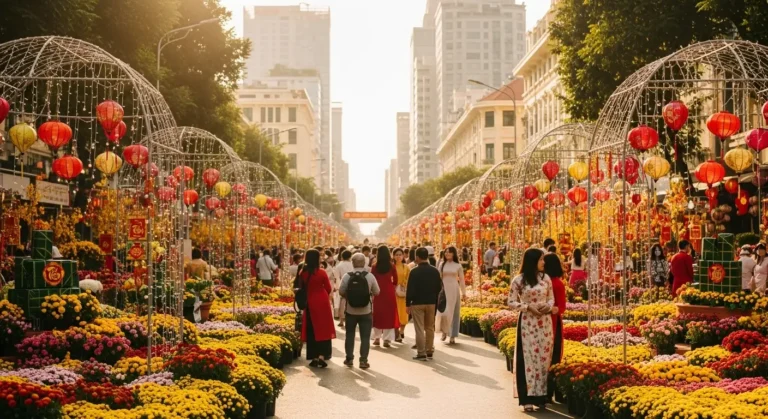
II. Key Characteristics and Design
The design and construction of the Flower Street are meticulously planned and executed, often taking two weeks to complete and featuring hundreds of thousands of flowers.
1. The Zodiac Mascot (Linh Vật)
Annual Focus: The centerpiece always features a grand, massive sculpture representing the zodiac animal of the coming year (e.g., Dragon, Snake, Cat, etc.).
Artistry: These mascots are elaborately crafted from natural, often eco-friendly materials, and covered in vibrant flowers, serving as the main photo spot for visitors. The design blends traditional folk elements with modern aesthetics.
2. Thematic Sections
Narrative: The 600-meter-long street is divided into multiple thematic zones that chronicle Vietnam’s journey, from its past culture and traditions to its future ambitions.
Floral Diversity: The street showcases an estimated over 100,000 flower baskets of various types, including popular Tết flowers like Ochna integerrima (Mai), apricot, and chrysanthemums.
3. Cultural Displays
Architecture and Art: Installations often incorporate traditional Vietnamese architecture, terraced fields, folk craft designs, and bamboo or rattan structures, emphasizing the nation’s connection to nature and heritage.
Light and Sound: Sophisticated lighting and water displays are integrated into the design, making a visit in the evening particularly magical.
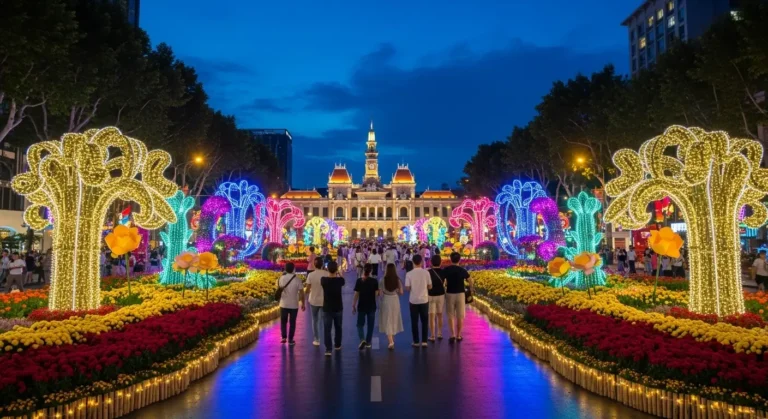
III. Visitor Experience and Tips
A. The Vibe
During its opening week, the Flower Street becomes the single most crowded and energetic spot in the city. It is a place for families and friends to gather, exchange good wishes, and capture beautiful Tết memories in their best new outfits (especially the Áo dài).
B. Visitor Tips
| Category | Recommendation |
|---|---|
| Best Time to Visit | Evenings offer the best viewing experience as the lights illuminate the flowers and sculptures. For fewer crowds, try the early morning just after sunrise. |
| Photography | Essential. The street is a massive open-air studio. Be prepared for long waits to take photos with the main zodiac mascot. |
| Dress Code | Wear new, colorful clothing, or the traditional Vietnamese Ao Dai. Bright colors (especially red and yellow) are traditional for Tết to symbolize luck and prosperity. |
| Entry | Free admission and open to the public 24 hours a day during the designated period. The street is completely closed to vehicle traffic. |
| Crowds | Expect extremely high foot traffic, especially on Tết Eve and the first day of the Lunar New Year. Be patient and mindful of others. |
